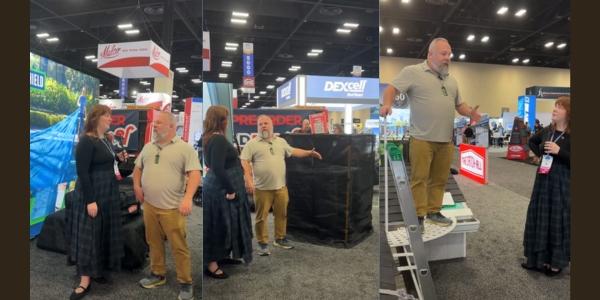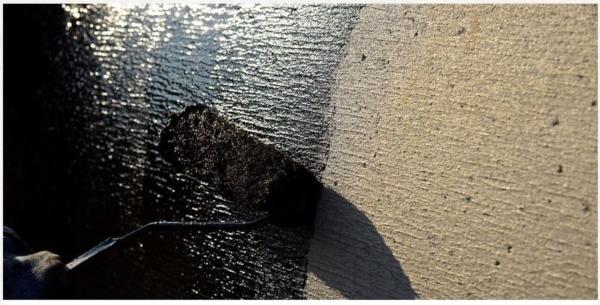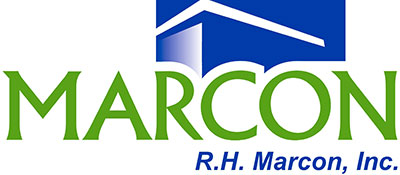The Insulation That is Keeping Study Halls Quiet

By ROCKWOOL.
ROCKWOOL delivers a sound-proofed roof to Ridgewood High School, keeping distracting noises out of the classroom.
Ridgewood High School is located near Chicago, and although the school is in a suburb, the blasting roar of jets flying in and out of Chicago O’Hare International Airport, only four miles away, makes the school sound like it’s in the city. The noise had become a larger problem, as flight patterns in and out of O’Hare changed. However, sound issues due to inadequate glazing for sound isolation requirements, the presence of the original roof assembly and a lack of air conditioning that requires open windows in some classrooms, proved that the exterior envelope of the school was incapable of keeping aircraft noise out of the classrooms.
“The noise can be so bad the teachers sometimes have to stop in mid-sentence,” said Arturo Benitez of DLA Architects, who oversaw the Ridgewood High School construction project designed to keep noise from making its way into the classrooms serving Ridgewood’s 900 students.
Increased flight volumes at airports across the U.S. prompted the federal government to fund a $220 million project dedicated to helping insulate high-impact facilities against sound interference. Case Study Re-roofing of Ridgewood High School Ridgewood qualified because octave band noise testing confirmed that measured noise levels exceeded the 45 dbA maximum acceptable level included in ANSI S 12.60 for schools, LEED® for Schools 2009 and Federal Aviation Administration guidelines for Type 4 buildings (schools).
Thus, the school was included in the Chicago Department of Aviation’s School Sound Insulation Program for communities surrounding O’Hare and became eligible for federal sound remediation construction funding to bring decibel levels within FAA guidelines. After considering a variety of options, Benitez and his sound consultant, Laurie Kamper of Threshold Acoustics, determined that a roof assembly that featured alternating layers of Georgia-Pacific Gypsum’s DensDeck® boards and ROCKWOOL Toprock® DD Plus stone wool insulation would achieve the desired sound attenuation levels.
Importantly, by changing the materials above the roof deck, the interior of the building’s ceiling structure has remained intact, allowing for ongoing construction while classes were in session. According to Kamper, the 2011 published results of third-party testing* of the Toprock® DD Plus/DensDeck® assembly confirmed that the construction was ideal for the project. It was the first gypsum roof board assembly tested to contribute to Sound Transmission Class (STC) ratings of up to 61 and Outdoor Indoor Transmission Class (OITC) ratings of up to 49 in roofing assemblies for commercial framed construction. STC and OITC ratings are measures of resistance of a building element (e.g., roof) to sound penetration based on different assumptions regarding the frequency content of the sound. Higher STC and OITC ratings indicate better sound resistance for the specific assumptions of the rating.
ROCKWOOL Toprock® DD Plus stone wool insulation demonstrates superior sound reduction characteristics as its non-directional fiber orientation helps to trap and dissipate sound waves. The product also has a higher density top layer providing strong point-load resistance and effective load distribution. The product maintains a stable R-value over time, is dimensionally stable and won’t shrink or off gas blowing agents into the environment.
DensDeck® Roof Boards are the number one architecturally specified fiberglass mat gypsum roofing cover board. Featuring a combination of fire resistance, strength, dimensional stability and ease of installation, DensDeck roof boards enhance the performance and sustainability of roofing assemblies. The mass of the gypsum core acts as a barrier to sound transmission and has been tested to show superior sound mitigation properties.
Also, both DensDeck and ROCKWOOL stone wool products are non-combustible, providing added fire resistance and safety to the building structure. Combined with other sound remediation enhancements – such as enclosing the rooftop duct system and AV units; adding extensive amounts of ROCKWOOL AFB® for interior stud walls and roof duct enclosures; adding laminated, tempered glass windows; and installing acoustically-rated door systems in certain areas – the new roof at Ridgewood is already making a significant impact in the classroom.
Learn more about ROCKWOOL in their RoofersCoffeeShop® Directory or visit rockwool.com.
Original article source: ROCKWOOL






















Comments
Leave a Reply
Have an account? Login to leave a comment!
Sign In